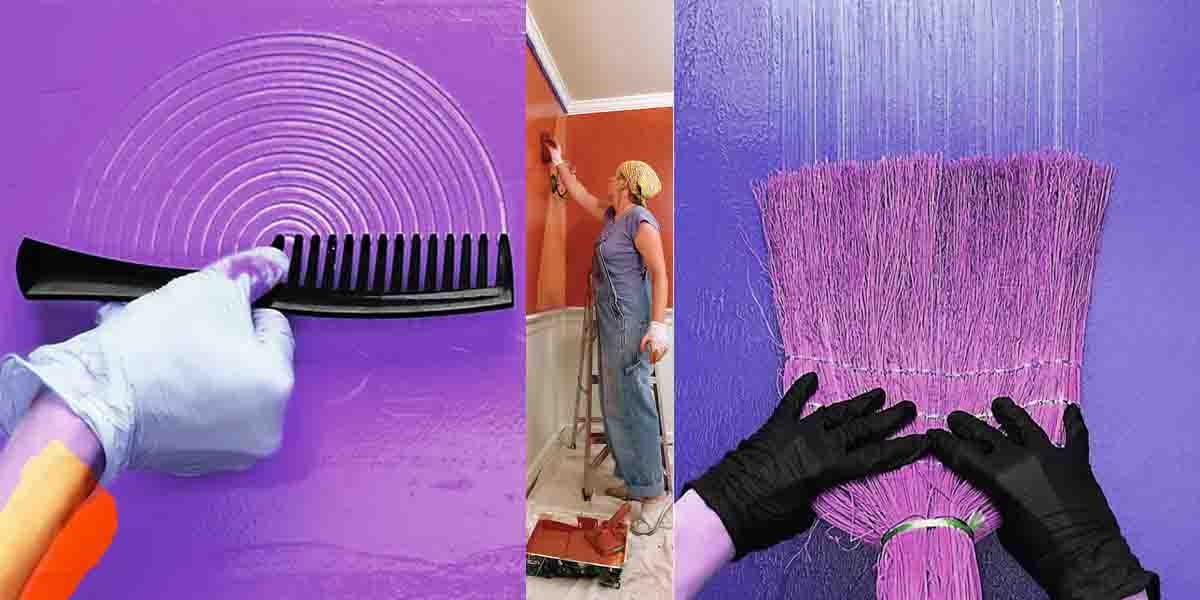Plain painted walls are good on their own, but they can be decorated more originally if desired. Here are a few ideas to keep in mind.
Idea 1: Painting with acrylic paints
Wall painting is especially relevant for a thematic nursery interior, for example, in a marine or fairy-tale style. Drawing can be both complex and detailed and simple and uncomplicated. Large compositions are best placed on only one wall, while small prints can be distributed in several places in the room at once, for example, above the bed, and in the play area. And one more piece of advice – if the room is small and there are enough bright objects in it, then large and bright drawings will only reduce the space and overload the interior. Read more tips, decor ideas, as well as step-by-step instructions for painting walls with your own hands in this article.
Idea 2. Highlighting the accent wall with color
If you want the child’s room to be bright, but you are afraid to overdo it, paint only one wall or part of the wall with colored paint, and neutrally decorate all other partitions. So you make the interior stylish without overloading it. In addition, in this way, you can zone the space, visually separating, say, a sleeping or play area from a work area.
Idea 3. Creating an optical illusion
If the room is small, narrow, or has low ceilings, you can correct these shortcomings by decorating the walls with stripes or diamonds.
- A vertical strip visually increases the height of the ceiling but somewhat narrows the room:
- Rhombuses also visually stretch the walls up, and they can safely decorate all the walls in the room.
- A horizontal strip, on the contrary, can slightly lower the level of the ceiling, but it will visually expand a narrow room. This technique is best used on only one accent wall.
Idea 4. Vinyl stickers
With their help, you can easily, quickly, and inexpensively transform plain walls and the interior as a whole. In the last couple of years, black and gold stickers in the form of circles, triangles, clouds, raindrops, stars, and hearts have not gone out of fashion.
If you like this way of decor, we suggest you learn more about it from our article: Interior stickers in a children’s room design.
Idea 5. Combination of painted walls with wallpaper or photo wallpaper
Not sure which is better – paint the walls or wallpaper them? Or maybe both? By sticking beautiful and colorful wallpaper or photo wallpaper on one wall and just painting the rest of the walls, you will only benefit from a compromise – make the interior stylish and save on wallpaper.
How can you paint the walls in the children’s room?
The walls in the child’s bedroom need to be covered with paint, which is intended specifically for decorating children’s rooms and has special characteristics:
- Water-resistance;
- Hypoallergenic;
- breathability;
- Abrasion resistance;
- Thixotropy (for ease of application);
- The economy in price and consumption.
How can you decorate a nursery?
Wallcoverings that meet all of the above characteristics are sold in the following types:
- Water-dispersion paint or just water-based paint – dries quickly, is breathable, does not smell, is easy to clean, and inexpensive.
- Acrylic paint has characteristics similar to water-dispersion paint, and in addition to all the pluses, the paint forms a high-strength matte surface when dried.
- Silicone paint is the most modern material for painting walls, which has both vapor permeability and water resistance at the same time.
- Latex paint – lays down well and holds firmly. The surface painted with this paint is very pleasant to the touch.
- Ecological paints – paints with the most natural composition, even from their name, it is clear that they are the best suited for a nursery. Their only downside is the cost.
And what paints can not paint the walls in the nursery? Oil and alkyd enamel paints are not suitable for children’s rooms because of the harsh smell and non-breathable surface.

